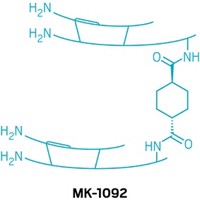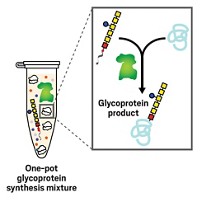Advertisement
Grab your lab coat. Let's get started
Welcome!
Welcome!
Create an account below to get 6 C&EN articles per month, receive newsletters and more - all free.
It seems this is your first time logging in online. Please enter the following information to continue.
As an ACS member you automatically get access to this site. All we need is few more details to create your reading experience.
Not you? Sign in with a different account.
Not you? Sign in with a different account.
ERROR 1
ERROR 1
ERROR 2
ERROR 2
ERROR 2
ERROR 2
ERROR 2
Password and Confirm password must match.
If you have an ACS member number, please enter it here so we can link this account to your membership. (optional)
ERROR 2
ACS values your privacy. By submitting your information, you are gaining access to C&EN and subscribing to our weekly newsletter. We use the information you provide to make your reading experience better, and we will never sell your data to third party members.
Biological Chemistry
Glycoproteins Made To Order
Chemical Biology: First homogeneous, eukaryote-type N-glycoproteins from prokaryotes
by Stu Borman
March 8, 2010
| A version of this story appeared in
Volume 88, Issue 10

An international team has for the first time prepared homogeneous N-glycoproteins of the type produced by eukaryotic organisms, including humans, from prokaryotes. In those protein molecules, branched sugars of uniform composition are linked to specific arginines.
The work could lead to monoclonal antibody medications with improved potencies and fewer side effects and could ease studies on the biological effects of different protein glycosylation patterns, which play important functions that remain incompletely understood.
Several groups have been trying to produce N-glycoproteins (N-glycans) in bacteria, which typically do not glycosylate their proteins. Microbiologist Markus Aebi of the Swiss Federal Institute of Technology, Zurich, and coworkers previously engineered Escherichia coli with genes from Campylobacter jejuni, a gastroenteritis-causing bacterium that is unusual in being able to glycosylate its proteins. But the engineered E. coli made glycoproteins with an immunogenic C. jejuni glycan and an unusual and unwanted bacillosamine sugar linked to the protein.
Now, Aebi, protein glycosylation specialist Lai-Xi Wang of the University of Maryland School of Medicine, and coworkers report for the first time that E. coli can be engineered with C. jejuni genes to make bacillosamine-free N-glycoproteins that can be elaborated enzymatically into nonimmunogenic eukaryote-type N-glycoproteins with customized glycans (Nat. Chem. Biol., DOI: 10.1038/nchembio.314). They did this by producing N-glycoproteins in C. jejuni-engineered E. coli cells, purifying them, and then swapping their glycans for eukaryotic ones.
Homogeneous N-glycoproteins can also be made in other ways, such as by chemical synthesis or by expression in engineered yeast. But chemical synthesis is extremely challenging and time-consuming. And Aebi and Wang believe the bacterial approach will be faster, less laborious, and higher yielding than creating them in yeast, which are eukaryotes.
For instance, yeast has to be engineered differently for each different type of glycan (glycoform), whereas the new method “will have the flexibility to produce a series of homogeneous glycoforms using one type of engineered E. coli,” Wang says. “Moreover, it can also produce unnatural glycoforms that the yeast system wouldn’t be able to produce.” The yeast approach is controlled by Merck & Co. as a result of its 2006 acquisition of the biotech company GlycoFi, which developed it.
Bacterial N-glycosylation specialist Christine M. Szymanski of the University of Alberta, in Edmonton, says the new study represents “the first time anyone has been able to use a bacterial system to synthesize a homogeneous eukaryotic N-linked glycoprotein. There are other systems that have been used to do this, but they all come with their own problems. This one shows much promise but requires further development to make the system commercially feasible.”





Join the conversation
Contact the reporter
Submit a Letter to the Editor for publication
Engage with us on Twitter